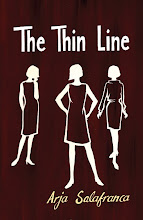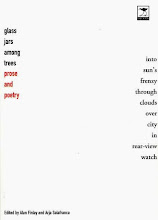We’re walking across a plain at night. I’m in a group consisting of 16 elephants and just as many people, visitors as well as elephant handlers. It has just grown dark and we’re ambling at an elephant’s pace through the veld at Kapama Game Reserve, which edges the Kruger National Park.
We’ve just passed a lion sitting majestically in the plain, watching as this procession of grown elephants, baby elephants and humans winds through the bush.
Flashlights illuminate the way, flicking constantly from side to side. Above us the Milky Way comes into view, obscured by the bright, nearly full moon.
There’s a canopy of stars above, almost like a blanket covering us. We move on, beyond the lion, the ground sloping gently upward. Ahead we see a herd of wildebeest, moving through the veld, ignoring us. On elephant-back we’re part of the veld, part of the world of the animals, part of something ancient, timeless and even nameless.
As we move through the night, on the way to the elephants’ stalls, I feel I’m lost in time, as if I’ve gone back thousands of years, before cars and technology, noise and light, rush and movement.
Back to the way humans used to move across the earth, on the backs of animals, on elephant, horses, mules, donkeys, following the slow rhythmic movement of the animals, going as fast as hooves would allow. There’s no rushing the process.
We will arrive when we arrive. It’s a slow procession across the land, walking and silence, almost a meditation. I’m reminded of Robyn Davidson’s excellent travel book Desert Plains, published in the mid-1990s, in which she travelled with the Rabari, a tribe of Indian nomads, riding camels as she had in her bestselling Tracks. Using an ancient form of transport – a slow form that guides and shapes your days in a way that is no longer available to us in everyday life.
Tonight I’m riding the female elephant Tokwe, named, like some of the elephants at Camp Jabulani, after rivers in Zimbabwe. She moves slowly, slower than the bull Mupfuri that I rode last night on a sunset ride.
As we move, I get a sense that she’s tired, somehow. Her baby, the male Limpopo, stays close by, occasionally breaking away to tear at branches to chomp along the way.
In fact, the noise of the elephants, tusks outstretched, reaching out to tear a tasty morsel of tree or branch, along with the quiet clumping along the path and the occasional murmuring of the other elephant riders, are the only sounds that accompany us as we move through the plain.
Arriving at the elephants’ stalls, we dismount, one by one. By riding elephants tonight, we have gone back centuries, we’ve reconnected with something we hadn’t been aware of previously.
We’re each of us moved in different ways. We exclaim excitedly as we dismount, “awesome, amazing, unbelievable” – the quotidian adjectives don’t do the experience justice, but they are all we have.
Once the elephants have been led into their stalls, Ian Crichton, the elephant master, takes us through and explains the differences in their personalities.
Fishun sports a big scar. He was treated by vets using the ramp that we use to mount the elephants. As such he’s developed a phobia about going near the mounts, and cannot be ridden.
“So, he’s just a freeloader, doing his own thing,” jokes Crichton affectionately.
We’re led to Tokwe, the elephant I rode tonight, which, Crichton says, is a type of mother aunt to the other baby elephants, which often cluster around her during the day.
Most heartbreaking is the plight of Kumbura, an orphaned elephant, which has no mother, and when she needs protection, none of the other elephants shelter her as she doesn’t “belong” to them. Instead she takes refuge under the powerful presence of Jabulani, after whom the camp is named. We cluck sympathetically.
Other elephants don’t like being touched and as Crichton leads us outside, I’m struck by the differences in personalities and temperaments between the 17.
Then there’s Joe, absent Joe, who took off one day, deciding that he didn’t want to live in the stalls, and left to join a wild herd. The camp owners have respected his decision.
Camp Jabulani is all about the elephants, and respecting their needs and wishes, explains Crichton. The camp itself, a luxury lodge, is named after one of the elephants, Jabulani, and the herd at the camp were saved from death.
Jabulani was the first to be rescued, in 1997. As a four-month-old, Jabulani arrived at the Hoedspruit Endangered Species Centre. Dehydrated, he’d been abandoned by his herd and been found stuck in the mud of a silt dam. It took a year for him to recover.
In 2002 the Roode family, who have been involved in conservation since the 1970s, heard about the plight of 12 elephants in Zimbabwe. The owners of the farm in that country were having their land expropriated and the elephants faced death. The Roodes set off for Zimbabwe, returning with the elephants, and amazingly Jabulani was immediately accepted by this new herd.
Camp Jabulani was created with the aim of supporting these elephants and offering the opportunity of interacting with them as well as riding them.
Says Adine Roode, managing director at Camp Jabulani: “Should I have had a choice and if it was easy to release domesticated elephants into the wild, it would have been an option to release these elephants, but unfortunately it was not possible. We were able to save the animals from a gruesome death and at this stage we provide safaris to sustain the operation by giving guests an experience.”
On the safety of the rides, she says: “The time of the day doesn’t really have an effect on the safety aspect for the elephant-back safaris. I’m more of the opinion that the experience of the handlers is of paramount importance.”
The handlers came with the elephants from Zimbabwe and have 30-plus years of experience. Each elephant has its own personality and the handlers have to interpret their moods.
“Elephants have a lot of similarities to humans and their emotions must be respected and understood by us. The amount of time the handlers spend with the elephants is vital as this creates a bond and trust between the two,” says Roode.
“Our senior grooms are on th e ground overseeing proceedings and have a wonderful relationship with the elephants. We would not be able to continue such an operation without these handlers.”
We leave the elephants in their stalls for the night, heading back to the lodge for supper. Although it has been a full day, we remain energised, the remarkable stories of the elephants, of their distinct differences, their rescue and the creation of a camp remain with us as we sit down for dinner.
This will be our last interaction with the elephants before we go home the following morning.
An equally remarkable sunset elephant-back ride had been our introduction to the rides, starting in the golden light of late afternoon the previous day.
We also pay a visit to the Hoedspruit Endangered Species Centre where Jabulani had first been brought as a dehydrated baby. The centre, in Hoedspruit, rehabilitates and cares for injured and orphaned animals and is dedicated to the survival of rare and endangered species, especially the cheetah.
On arrival we watch a DVD which explains the work of the centre.
At the curio shop I buy a paw print cr eated by a playful cub. A drive around the centre introduces us to wild dogs yipping excitedly for their food, allows us to stroke an ambassador cheetah and park expectantly in front of the “vulture restaurant”, where a rotting smell of old meat and bones comes from the pit. This is a concrete rectangle filled with old as well as new bones, a veritable orgy of death.
The vultures gather, the student volunteers drive up and tip kilos of meat in and the vultures roar in, a spectacular, swirling mass of feathers in browns, greys, beiges, a whirlpool of birds feasting.
On the last morning before going back to Joburg – a five-hour drive – we opt for a quick, lateish game drive.
Our last, spectacular sighting is of a leopard perched high in a tree, camouflaged by the golden yellow colours of the leaves. It is a rare, elusive, a prize sighting.
Next to our game-drive vehicle, a large lion lies sleeping in the sun. Our ranger surmises that the lion would have chased the far smaller leopard up the tree as both big cats compete for food, resources and, ultimately, territory. It may be a long wait before the leopard can come down.
The sun climbs high in the sky, it gets hotter, and we take off in a roar of petrol, noise, urgency and haste.
We drive off but the ending to this story hasn’t yet been told, it’s still somewhere out there in the future, unknown.
(Published in The Sunday Independent, November 21)
Monday, November 22, 2010
Elephant back at Camp Jabulani
Subscribe to:
Post Comments (Atom)





.jpg)

No comments:
Post a Comment